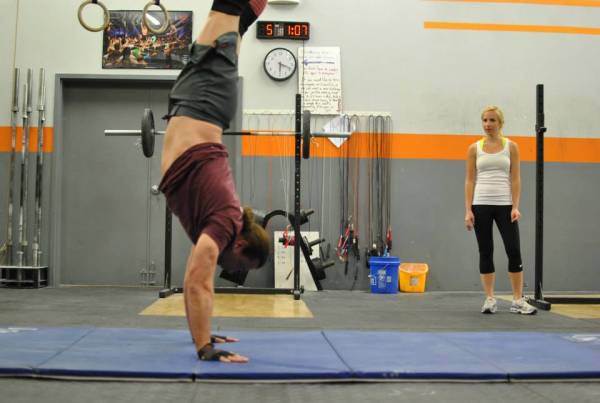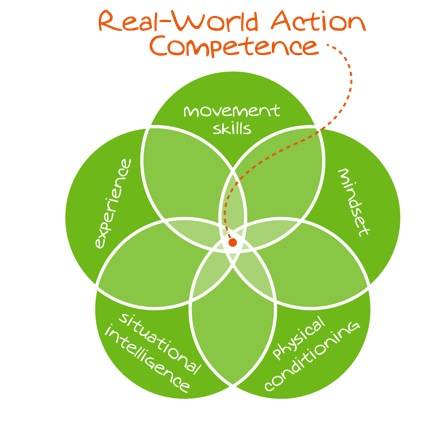Every now and then in a fitness program you have to stop what you are doing and think, “What am I really training for anyway?” Are you registered for an upcoming competition of some sort (CrossFit, triathlon, Olympic lifting, grappling, etc.)? If so, then great! You are one of the lucky few people in gyms nowadays who have a clear vision of what they should be doing: preparing for and practicing your sport.
Why Do You Push Yourself Daily?
However, if like the majority of gym-goers, you do not have any particular event on your calendar for which you are training, then why do you push yourself on a daily basis? Let us go through some common answers:
- “I am trying to lose some weight.” – Here is a super secret fitness tip from an insider: the guaranteed way to lose weight instantly is easy – just cut off a limb! Voila, weight lost! Oh, that is not what you meant?
- “I am trying to lose some body fat.” – The good news: you have great intentions. The bad news: studies show that exercise alone is not all that effective at losing body fat. Ouch, sorry.
- “I am trying to build some muscle.” – Okay good, this is something I can support, and you do not have to be a bodybuilder to want to build muscle. Simply put, increasing your lean muscle mass helps prevent aging, not to mention getting that much closer to being both jacked and tan.
Okay, so all kidding aside, what are we missing here? How about the simple fact that humans are meant to move. If you have not yet watched Daniel Wolpert’s TED Talk The Real Reason for Brains, then please do so immediately. If you engage in a structured physical activity or fitness program, then please acknowledge the fact that movement needs to be a higher priority in your life.
CrossFit: GPP or SPP?
Let us work through a specific example. CrossFit, in its humble roots, is a general physical preparedness (GPP) program. Taken from the CrossFit website:
Our program delivers a fitness that is, by design, broad, general, and inclusive. Our specialty is not specializing. Combat, survival, many sports, and life reward this kind of fitness and, on average, punish the specialist.
Towards this end, CrossFitters often talk about “work capacity,” i.e., the ability to do a given amount of work in a given amount of time. It is precisely this theoretical underpinning that justifies the emphasis on quantity over quality that is present at so many CrossFit gyms. Who cares if those push-ups did not “look good” (whatever that might mean)? You did one more round of “Cindy” than last time, so you are by definition more fit.
But excuse me – how exactly do you demonstrate work capacity in the absence of performing specific movements?
For instance, if your “Fran” time improves, then you very well may have just gotten better at the specific skills of barbell thrusters and kipping pull ups. Or maybe you knock a minute off of your “Diane” record, in which case you possibly just improved your technique at barbell deadlifts and kipping handstand push ups.

What is my point? These are all specific skilled movements. There is no such thing as pure unskilled work capacity. CrossFit’s version of GPP is actually more like SPP – specific physical preparedness. Why do so many CrossFitters choose dumbbell snatches and shy away from kettlebell snatches? Because snatching a kettlebell requires practice. Why work on your static handstand hold when you could be doing something sexy like handstand walks? Because static holds are harder and require more skill.
A New Mindset and Purpose
So what am I getting at? I propose that we, as fitness generalists with no specific attachment to any one competitive discipline or sport, adopt a new mindset and purpose for why we train:
Train to learn new skills, gradually and progressively, so as to become capable of and masterful in more complex movements.
I must credit three great thinkers in the world of movement for planting the seeds behind these ideas. First, Ido Portal has been a source of continued inspiration for me ever since I discovered his blog in 2009. Check out his video here:
And second I must also give credit to Erwan Le Corre and his MovNat system. I recommend you read The MovNat Principles and study the following Venn diagram:

Lastly, Coach Christopher Sommer of Gymnastic Bodies has built an online community around gymnastics strength training that, in my humble experience, best fits the training purpose stated above. The Foundation and Handstand Series are full of progressions and regressions for a wide array of movements, and every strength element is paired with an integrated mobility drill that specifically relates to the task at hand. Trainees of virtually any level would greatly benefit from getting stronger, becoming more mobile, and learning new movement skills.
So what do you think? Should non-competitive athletes focus on skilled movements, even if a lesser skilled movement could potentially build more work capacity? Or is there merit to be had from learning novel and increasingly complex movement patterns for the average trainee? Post your thoughts to the comments below.
Photo 1 courtesy of Shutterstock.
Photo 2 courtesy of CrossFit Impulse.
Photo 3 courtesy of MovNat.






